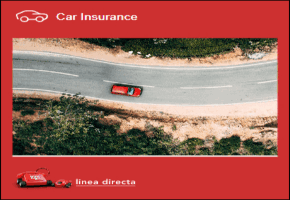
To be listed on the haciendadelalamo TODAY MAP please call +34 968 018 268.
article_detail
Spanish News Today Editors Roundup Weekly Bulletin Sept 20

TOP STORIES: "Rising cost of living—Navigating food prices in Spain" & "Further delays possible for EU Entry-Exit system as November 2024 deadline in doubt"
This Sunday, September 22, is the official start of autumn in the Northern Hemisphere. Clocks aren’t going back yet but there’s definitely a noticeable chill in the air and a nice, welcome steady drizzle of rain – gives us the kind of watering we need for lawns and reservoirs without any of the horrendous flooding that comes with a downpour.
Here in your weekly outpouring of Spanish news, we’ve got the latest on the cost of living (spoiler alert: it’s still going up), an update on the situation with EU border controls, and a historic shark attack.
Shark story
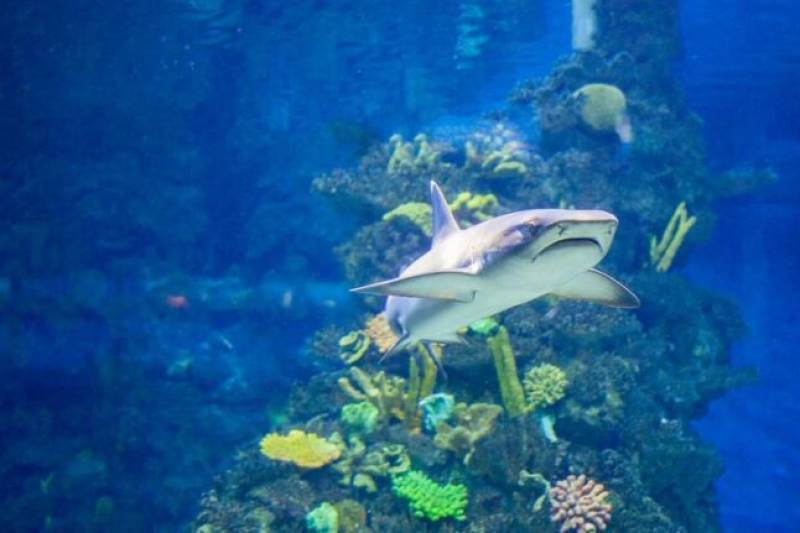
We intermittently hear about shark sightings in Spain, but most of the time they are just small and harmless ‘tintoreras’ which have lost their way or come to close to shore because they are sick. But the shark story that emerged this week was much more extreme.
It was on Tuesday September 17 when a British-flagged yacht was sailing off the coast of the Canary Islands, just idling in the waters around 180 kilometres west of the city of Dakhla in the Western Sahara, an area where the Spanish coastguard shares international rescue responsibilities with the Moroccan Navy.
It seems that a 30-year-old German woman was just having a dip in the water when she was attacked by a shark, who came up and bit her leg off.
The crew of the catamaran immediately requested urgent help from Spain’s Salvamento Marítimo, which dispatched a helicopter to the scene. Despite receiving first aid supplies from a nearby ship, the woman’s condition deteriorated, and she went into cardiorespiratory arrest while being airlifted to the hospital in Las Palmas de Gran Canaria.
Sadly, the woman was pronounced dead before even arriving at the Spanish hospital.
Sharks are a common sight off the coast of the Spanish islands but no incidents have ever been recorded in the area where Monday’s fatal attack occurred. In fact, according to the Florida Institute of Natural History, since records began there is only evidence of six incidents in the Canary Islands, none of which were fatal. Until now.
Endless European Setbacks

So, here we go again – another possible delay in the EU’s shiny new Entry-Exit System (EES). This initiative, which is meant to give border control a high-tech upgrade, was originally set to kick off in the summer of 2023 but it’s since been hit with more delays than a budget airline flight.
After having been pushed back to avoid the chaos of last autumn’s Rugby World Cup and this year’s summer holidays, the big launch was pencilled in for November 10, 2024. But, surprise surprise, it looks like we may be facing yet another delay.
The system is supposed to make border crossings quicker and easier (or at least that’s the hope), by digitising them, introducing biometric fingerprinting and facial recognition checks at ports and airports.
But, despite ample chance to prepare for the new system, France, Germany and the Netherlands are all saying they’re simply not ready. And considering these countries run major entry points like the Port of Dover, Frankfurt Airport and Amsterdam’s Schiphol, EU heads are willing to hold off and wait for them. They’re worried about long queues and mass confusion, which, let’s face it, doesn’t sound too unfamiliar from your average airport experience.
One suggested solution to help (partially) meet the November ‘deadline’ is a phased rollout, but that kind of defeats the whole purpose of the EES to control movement of people across all of Europe’s borders. It’s either all or nothing.
And, of course, all of this is bad news, in turn, for the ETIAS visa waiver scheme that’s waiting in the wings. The EES needs to be up and running before they can start making non-resident, non-EU travellers pay to enter the Schengen zone, but for now that plan is stuck at the gate.
Pay up
Do you ever feel like the only way is up when it comes to the once ‘dirt-cheap’ cost of living in Spain? Well, it’s not just you. Over the past few years, with the exception of a few fluctuations and welcome reprieves, costs have been climbing and perhaps the biggest stressor on households is groceries.
We’ve long been hearing about families who’ve had to forego the healthy essentials like meat and fish in favour of cheaper, processed alternatives, and there’s a very good reason for this. It turns out that food prices have increased by 3.5% since this time last year, but even more scary is the cumulative rise since 2021, which sits at a staggering 35.5%.
This sharp increase has significantly impacted purchasing power, forcing families to rethink their shopping habits.
The Organisation of Consumers and Users (OCU) recently analysed the prices in 1,070 supermarkets in 65 cities across Spain, focusing on 238 ‘essential items’ like fresh produce and hygiene products.
What they found makes for unpleasant reading.
“Over the past year, prices have been contained. They have stopped rising as much. But that doesn't mean that consumers have it any easier now. Many families have stopped eating meat or fish because prices remain at very high levels,” said Ileana Izverniceanu, director of communications for OCU.
Even this year, the OCU found that six out of ten items have actually increased in price. For instance, extra virgin olive oil prices have surged by an astonishing 80.2%. Other notable increases include Don Simón orange juice at +47.3% and Canary Islands bananas at +38.5%.
Given these rising prices, the OCU has called on the government to extend VAT reductions on meat and fish and to increase the reach of food vouchers for those in need.
So once you’ve handed over half your salary in the supermarket, you might be considering a trip to the service station on the way home to fill up your butane gas bottle for the hob or barbecue. Or, more realistically given the chill of the last few days, for the gas heater.
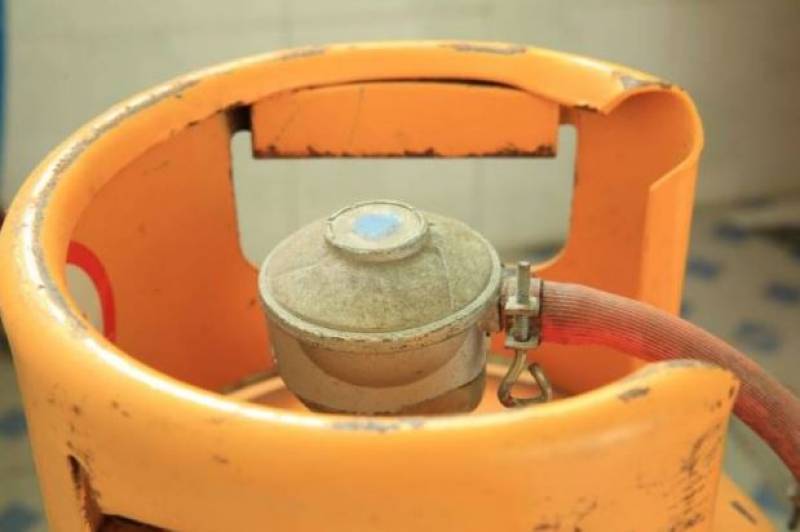 Bad news here as well, I’m afraid, as the Spanish government announced this week that the price of ‘butano’ is also going up by 3.85%. So, as of Tuesday September 17, the average gas canister now costs 15.93 euros.
Bad news here as well, I’m afraid, as the Spanish government announced this week that the price of ‘butano’ is also going up by 3.85%. So, as of Tuesday September 17, the average gas canister now costs 15.93 euros.The authorities review the price of bottled gas every two months on the third Tuesday of the month, and either increase or decrease the cost to the consumer, depending on the wider market.
This time around, the hike is due to a number of factors, including a 13.9% rise in the cost of raw materials, which is offset by falls in freight prices (-26.4%) and the slight appreciation of the euro against the dollar (+1.32%).
Believing it’s often a case of the rich getting rich and the poor getting poorer, Spain’s Labour Minister Yolanda Díaz has proposed a radical tax reform that will heap extra charges on ‘luxury’ goods like high-end cars, large estates and boats. In turn, the generated money will be used to fund aid for those less well off.
Taxes on inheritances over 1 million euros and on capital income would also be increased, while VAT on essential goods and services, like hairdressers, veterinarians, nappies and electricity, would drop.
She also wants the tax on gluten-free food to be capped at the lower rate of 10%.
This all sounds like good news for the average household, but Ms Díaz’s political party Sumar has also stirred up the ongoing tourism debate in this country with a rather controversial proposal.
Sumar has suggested increasing the tax rate on tourist rentals to 21% and eliminating certain deductions landlords currently enjoy, with the aim of making holiday accommodation “drastically” less profitable for second home owners.
While this long list of proposals is still in the very early stages, it does seem to line up with the budget goals of the President of the Government, Pedro Sánchez, who summed up his economic priorities for the new political year in one sentence: “More public transport and fewer Lamborghinis.”
Murcia
Let’s start our Murcia section this week with the not-so-great news and then things can only get better. Murcia had a bit of a shaky weekend last weekend – literally. Three earthquakes hit the region in just under an hour on September 15, with magnitudes of 3.3, 3.0, and 2.1, and then a fourth measuring XX on the Richter scale just a few hours later. Thankfully, no damage or injuries were reported, though it certainly gave people a bit of a scare.
And if that wasn’t enough drama for one weekend, the next day saw a tragic incident at the Santiago de la Ribera beach, where a 61-year-old woman tragically died after suffering cardiorespiratory arrest while swimming. Despite the best efforts of emergency services, they were unable to save her.
But now onto some lighter and more exciting stuff. The Carthagineses y Romanos fiestas kicked off in Cartagena this Friday with the Sacred Flame arriving in grand style. This year, the flame’s journey was longer than ever, covering 270km from Linares, Jaén, to Cartagena via Lorca and Águilas.

The Sacred Flame is a symbolic fire that burns throughout the festival, representing the city’s rich historical heritage. The flame was carried by runners and even made the final leg of its journey by boat, arriving just in time to start the celebrations. Cue the festivities and Roman reenactments!
And if you’re in the mood for a little paddle action, there’s good news in the world of sports too. Callum Hughes and Josué Govea Moya from the Club MMGR on the Mar Menor Golf Resort snagged the top prize at the Pádel Intermediate Irish National Championships, showing off their impressive skills at Dublin’s Bushy Park.
This dynamic duo, trained right here in Murcia, took the men’s intermediate category by storm, and their club’s winning streak is alive and well. Earlier this year, the club’s prodigy Maria Garcia Alcaraz also won big at the Spanish National Pádel Championship. Honestly, it’s starting to look like this club is unstoppable.
As if that wasn’t enough, even the turtles are winning! The first loggerhead turtle hatchlings of the year made their debut in Murcia. Weighing in at just 15 grams, these little guys are part of an endangered species transferred from a nest in La Manga del Mar Menor to the El Valle Wildlife Centre in Murcia city, and efforts are being made to ensure their survival.
The baby turtles will spend the next year in captivity to gain strength before they’re released back into the sea. With 53 already hatched and another 39 expected to make their way into the world, it’s a significant step forward in conservation. Murcia has seen a real success story here, with 178 turtles born since 2019, most of which have already been released into the wild.

Speaking of protecting the environment, the first ever trial for polluting the Mar Menor lagoon just wrapped up this week as part of the so-called ‘Caso Topillo’. A farmer, Francisco Roca León, was found guilty of illegally dumping nitrates into the water and was sentenced to a one-year suspended prison sentence.
His illegal desalination plant was found to be responsible for discharging harmful minerals, which caused severe damage to the ecosystem. Although his sentence has been suspended, the court’s decision marks a crucial moment in the fight to protect the Mar Menor from further pollution, and more cases like this are expected to follow as part of the larger Topillo Case.
It’s a step in the right direction for holding polluters accountable and helping to restore the lagoon’s delicate balance.
As always, there’s endless stuff going on around Murcia this weekend. Apart from the aforementioned Carthagineses y Romanos fiestas in Cartagena, you’ve got the Feria de Lorca, which starts today and lasts for the whole week; there’s a fun-looking classic vehicle rally in Alhama on Saturday; and on Sunday Águilas is hosting a local produce market. There’s really no excuse not to get out there and enjoy what Murcia has to offer,
Remember to see our EVENTS DIARY for more events and activities coming up soon in the Region of Murcia:
Spain
A curious development in Spain’s tourist sector as hotels and private landlords with holiday rentals are preparing for “chaos and confusion” with the introduction of a new law set to come into effect on October 1 across Spain.
In a bid “to enhance public safety and prevent terrorist activity and organised crime”, the Ministry of the Interior will soon require all tourist accommodations to collect a plethora of private data on their guests, including personal contact info, credit card numbers, contract details and more. This will then need to be manually collated by the establishment and sent to the Ministry.
This is a far cry from current practices, as guests normally need only provide their passport in order to check in to a hotel or holiday home.
The Spanish Confederation of Hotels and Tourist Accommodation (CEHAT), which represents more than 16,000 companies and 1.8 million places of accommodation, has expressed strong opposition to the law, citing concerns over data collection, storage and privacy. The organisation argues that the law is “very deficient and impossible to apply”, and that it will lead to a significant increase in errors, manual work and costs for establishments.
“There is widespread confusion regarding what data is required and how to submit it,” a Spanish hotel association spokesperson said, adding that “the Royal Decree implies a significant interference in the privacy rights of tourists.”
On the other hand, the Spanish government has made one improvement to a pretty complicated system which should make life a lot easier for the self-employed and contracted workers.
The Social Security has launched a new mobile app, ‘Importass’, which allows users to check their status and carry out various procedures that were previously only available through the Tesorería website.
 The app, which is free to download, is available to employees, self-employed workers, domestic workers, artists and students.
The app, which is free to download, is available to employees, self-employed workers, domestic workers, artists and students.It provides users with the ability to check their work history and contribution base, as well as calculate their sick leave entitlement and pension.
For self-employed workers, the app allows them to modify their contribution bases and earnings, update their data and communicate the start of new economic activities and the end of others.
Additionally, self-employed workers can use the app to carry out procedures related to the flat rate, attach additional documentation and consult their work history.
This new app is a significant improvement to the social security system in Spain, making it easier for workers to manage their contributions and access benefits.
Finally, jellyfish – often considered a nuisance by beachgoers – are now being studied as a potential sustainable resource for the development of biomaterials in Spain.
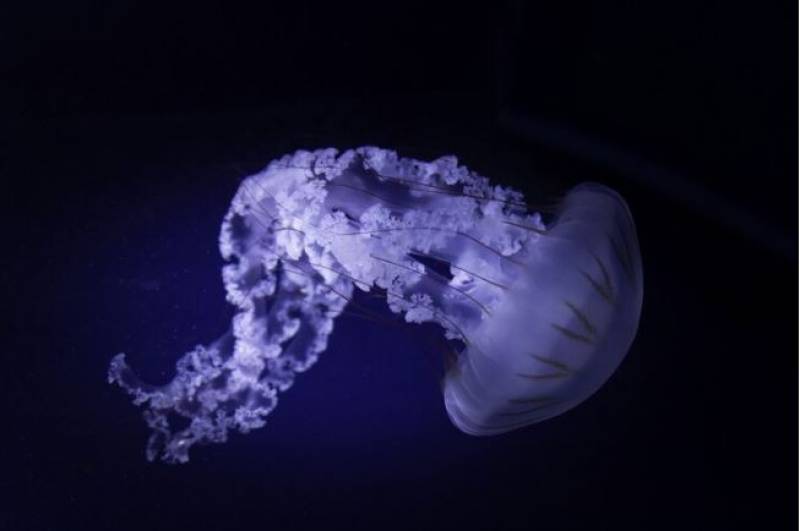 The proliferation of jellyfish in the Mediterranean has been a major concern for the tourism and fishing sectors, but a new project launched by the CSIC and the Catholic University of Valencia aims to turn this problem into an opportunity.
The proliferation of jellyfish in the Mediterranean has been a major concern for the tourism and fishing sectors, but a new project launched by the CSIC and the Catholic University of Valencia aims to turn this problem into an opportunity.The COLMED project seeks to promote the use of jellyfish as a sustainable source for the development of biomaterials in the field of biomedicine.
The project focuses on the barrel jellyfish and the fried egg jellyfish, two of the most abundant species in Spain, which are known for their high collagen content. This sustainable alternative has the potential to significantly improve the well-being and health of future generations in biomedicine, nutraceuticals and cosmeceuticals.
Using jellyfish collagen is a sustainable alternative to collagen derived from terrestrial mammals, such as cattle and pigs. The project’s research team will work in collaboration with fishermen’s associations to extract, collect and store the jellyfish. The COLMED project is a win-win situation for everyone, as it will provide a new source of income for fishermen and promote the use of jellyfish as a sustainable resource.
If the project is a success, in the future, jellyfish could be used to heal wounds, repair damaged tissue, or even grow new organs.
Alicante
These days, it’s all happening on social media and influencers are going to increasing lengths to achieve a few ‘likes’. But you’ve got to wonder what goes through someone’s mind when they decide to take on a stunt like one young man did last week in Benidorm. Is the desire for social media fame really worth risking your life?
The British Instagrammer took the phrase ‘social media daredevil’ to a whole new level by climbing the third-highest building in Benidorm – barefoot and without any safety equipment.
The Luango Tower, which stands at an impressive 158 metres high, was the site of this crazy stunt. The influencer, who goes by the name @nuisance69_ on Instagram, filmed himself free-climbing the side of the building and posted the video online.
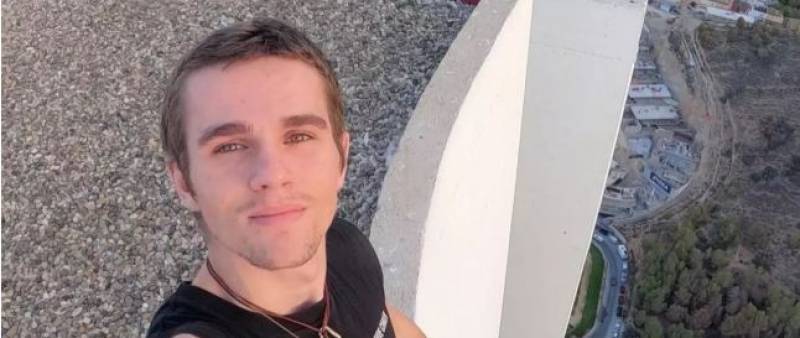
The climb took 34 minutes, and the influencer stopped at each floor to check if people were watching and to test the metal to see if it could support his weight. After reaching the top, he took a selfie lying down on the roof of the tower.
This isn’t the first time @nuisance69_ has taken on a daring challenge in the Valencian Community. He’s previously hung from a crane in Benidorm and even got arrested for taking a selfie from the 11th floor of a building.
As for more conventional holidaymakers, Alicante is also breaking records when it comes to cruise passengers. Before the summer ends, the Costa Blanca port will have welcomed 94 luxury liners carrying a whopping 212,500 holidaymakers, the largest number ever.
The Costa Blanca and Alicante city are becoming increasingly popular with cruise liners, with a record-breaking number of ships and passengers expected in 2024.
According to José Mancebo, director of the Provincial Tourism Board in Alicante, the city has become “an attractive base port for shipping companies, generating a significant economic impact, with figures reaching 40 million euros, and possibly reaching 70 million if indirect and induced impacts are included”.
In 2022, 60 ships docked in the port, a figure that jumped up to 84 in 2023. This year, Alicante is expected to set a new record with 10 additional ships and an 8% increase in passengers.
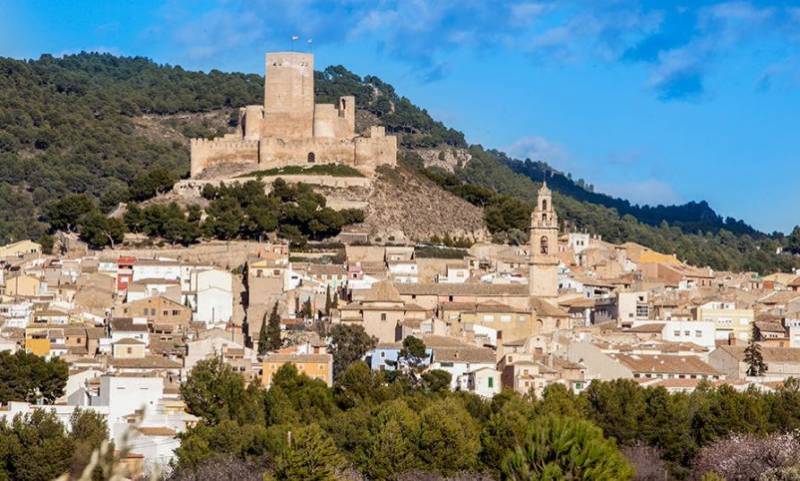 If you’re looking for a holiday destination a little more off the beaten track, you might want to take a look at the hidden gem of Biar, an Alicante municipality of just 4,000 people that has just been voted one of the most beautiful towns by National Geographic.
If you’re looking for a holiday destination a little more off the beaten track, you might want to take a look at the hidden gem of Biar, an Alicante municipality of just 4,000 people that has just been voted one of the most beautiful towns by National Geographic.Tucked away in the Alto Vinalopó region, 45 kilometres northwest of Alicante city, this medieval town is a treasure trove of historical architecture and stunning natural surroundings, with breathtaking views of the mountains and valleys.
Biar’s crowning glory is its 12th-century castle, a majestic fortress that dominates the landscape and offers panoramic views of the old town and surrounding mountains.
According to National Geographic, the town’s centre is a step back in history, with its Gothic-Renaissance Church of the Assumption, fountains, arches and buildings that tell stories of times gone by.
National Geographic’s list of the most beautiful towns in Alicante includes some familiar names, such as Altea, Xàbia and Guadalest, as well as the island of Tabarca. However, Biar is the surprise addition to the list this year, and for very good reason.
Elsewhere, all this weekend, providing the weather holds out, is the first ever Beach Oktoberfest in Villajoyosa and Finestrat, bringing the authentic German tradition of beer and wurst to the Mediterranean coast.
Do be sure to join the Costa Blanca What’s On and Where to Go Facebook group to see more things to do around Alicante province!
Andalucía
West Nile Virus is continuing to cause concern in southern Spain as mosquitoes have been spreading the virus across Andalucía all summer. It has sadly claimed two more lives recently.
A man and a woman in Jaén passed away in a hospital in Córdoba, bringing the total number of deaths to nine so far this year. The virus has spread to several areas, including Sevilla and Córdoba, and even infected two eagle chicks and a horse in Jaén.
Towns are raising the alert level, and demonstrations have been held by concerned citizens demanding action from the Junta de Andalucía to stop the spread of both the disease and the insects that carry it.
 Speaking of horses, things have taken a dark turn on the Costa del Sol, where a shocking incident in Fuengirola has sparked outrage. A horse pulling a carriage collapsed on the seafront, and instead of helping the poor animal, the driver allegedly yelled at it and even punched it in the face.
Speaking of horses, things have taken a dark turn on the Costa del Sol, where a shocking incident in Fuengirola has sparked outrage. A horse pulling a carriage collapsed on the seafront, and instead of helping the poor animal, the driver allegedly yelled at it and even punched it in the face.Yes, you read that right; eyewitnesses were horrified, and this is just the latest in a series of disturbing reports about the mistreatment of animals in the tourism industry. But then again, what can you expect from people who would tie them up and make them pull heavy loads all day over a road surface that doesn’t do any favours to their hooves?
The incident has got animal rights groups up in arms, and the call for better protection for horses and donkeys working in these harsh conditions is growing louder. I mean, if a horse can’t collapse from exhaustion in peace without being smacked around, what is the world coming to?
But not all donkey-related news is tragic. In a much softer, fluffier tale, a German lawyer is desperately searching for her beloved teddy bear, Hilde, who just happens to be a grey donkey wearing a brown, chequered scarf.
Hilde has been missing since May in Sevilla, and Alev Filya, the owner, is heartbroken. Hilde has been her companion for 15 years, travelling with her across countries, and now Alev is offering a 1,000-euro reward for anyone who finds her.
So, if you happen to be wandering around Sevilla and stumble upon a stuffed donkey, you might just earn yourself some cash and reunite a woman with her best friend. Let’s hope Hilde makes her way back home soon!
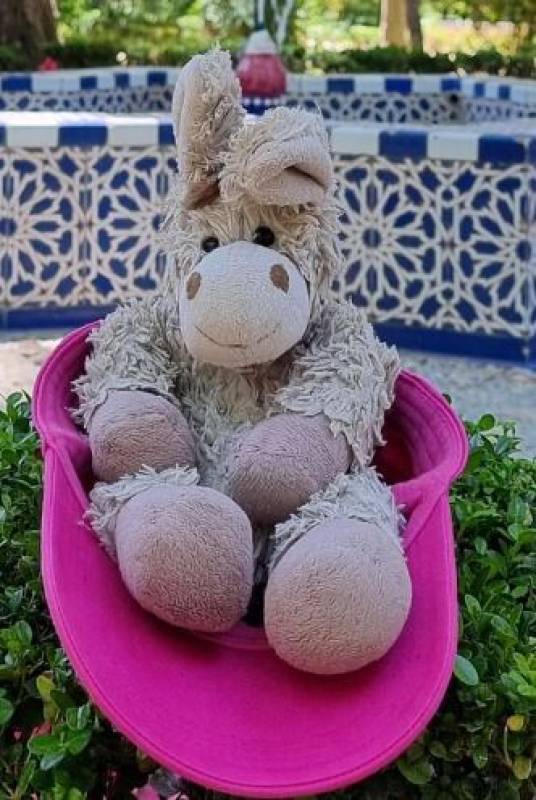
You may have missed…
- How Cristóbal learned to walk again in just 2 months.
Murcia resident Cristóbal faced a daunting challenge following his battle with swine flu and Guillain-Barré Syndrome which caused swelling on his spinal cord and left him unable to use any of his limbs. But with the help of neurorehabilitation professionals, Cristóbal was able to walk again in just under two months! - First part of ancient Phoenician shipwreck is brought to the surface in Mazarrón bay.
The first small section of the 2,600-year-old vessel of Phoenician origin in the Bay of Mazarrón has now been extracted from the sea in a technological feat that has been many years in the making. - Controversy as Spain v Denmark match to be played in Murcia sells out in less than an hour.
Murcia will host the Nations League match at the Enrique Roca stadium at Nueva Condomina on October 12 with a group match-up between Spain and Denmark, but as football fans from all corners of the Region of Murcia clamoured for tickets and the event sold out in less than an hour, many tickets have now appeared for resale on several portals for five times more than their original price! - New Totana railway station to boost Murcia-Almeria AVE.
The new Totana railway station, which will be built using Building Information Modelling (BIM) technology, is set to become a key addition to the Murcia-Almería high-speed rail line. Adif is allocating 9.4 million euros to build a sustainable and accessible station as part of its Strategic Plan 2030. - The Alcampo in Murcia is one of the cheapest shops in all of Spain.
According to a recent survey, the Alcampo supermarket in Murcia city has been ranked in the top 3 most affordable places to do your weekly shop in the whole country.
That’s all for this week. Thanks for reading and we’ll be back for more next week.
Bye!
Contact Murcia Today: Editorial 000 000 000 /
Office 000 000 000



